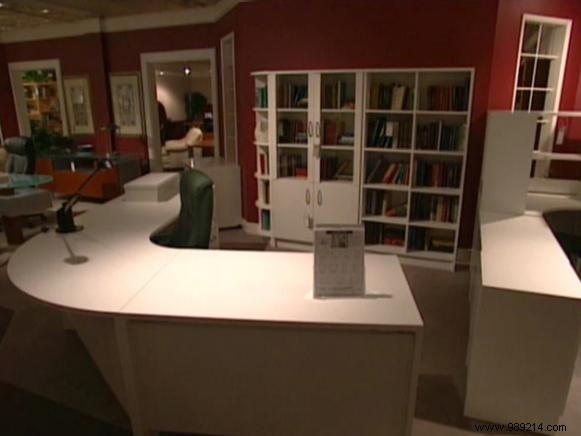
Statistics indicate that about two in 10 adults regularly work outside the home, and about three in 10 work at least part time. Statistical projections suggest that those percentages are expected to grow by 10 percent per year for the next several years.
When conducting business from home, a common mistake is trying to work from a makeshift, poorly arranged workspace, like the dining room table or in the corner of a dark basement. Such informal arrangements usually don't work in the long run and don't usually facilitate productive work. A well-designed workspace will help improve your efficiency at work, as well as your overall work experience.
Because you'll be spending a lot of time there, it's worth considering a few critical factors before beginning the process of creating a home office. Initial considerations include workspace location, furniture selection and placement, good lighting, coordinating the look of your office with your home décor, and acquiring some tools and skills to get organized and stay organized. . Look at the process of setting up a home office as an opportunity to custom design your own personal work environment to your own standards and ideals.
Often a spare bedroom is a suitable place for a home office. If you have such a space that you'd like to consider converting to an office, start by taking some measurements and making a rough sketch of the room's layout.
Make a list of your equipment needs (desk, computer, fax, phone, copier, filing cabinets, etc.) so you can start thinking about where these items will fit in your office layout. Focus on limiting yourself to items that you really need or will use very often.
Take note of the availability and location of existing electrical and telephone outlets in the room. You may want to take measurements regarding the outlets to help you plan the layout. Unless you're planning to add a phone line or additional outlets, the location of your existing outlets may partially dictate the placement of some of your furniture and equipment.
Think about how the office will function in relation to your family and your lifestyle. For example, will the office be essentially private and only used by the home professional, or will it likely also be used by other family members for phone calls, computer access, etc?
Budget before you start selecting and purchasing items for your home office. Think about how much you can afford to spend on furniture, equipment, and other costs that may be associated with converting the space to office use. As much as possible, know what you want before you go shopping for office supplies so you're not vulnerable to sales pitches that might convince you to buy items you don't really need.
Think "vertically". If you're limited to a small work space, look for creative uses of wall space and shelving to store and organize office supplies.
When it's time to start shopping for home office furniture, you may want to start with an office supply store. Most major office supply retailers will have a section of the store dedicated to desks, desk chairs, lighting, etc. Office supply stores often cater primarily to people settling for a home office or home business. The selection in those stores is tailored to those types of customers, and most of the furniture found there is made to fit nicely into a home environment.
In almost all cases, this type of furniture is bought boxed and unassembled. Remember that you will have to assemble the furniture yourself or hire someone to do it.
Don't skimp on the purchase of the office chair you plan to work on. Expect to pay $150-$180 for a good ergonomically designed chair.
In addition to office specialty stores, you may also want to check out the selection available at furniture stores. Some carry an extensive inventory of office furniture and office décor in a variety of styles. Depending on the store, this furniture can be more stylish than what you'll find in a typical office store. Office furniture, especially since the advent of the personal computer, has become available in a wide range of styles, from retro to traditional to contemporary. Your options may include metal and glass, marble or wood surfaces, and desks that come in traditional rectangular shapes, L-shapes, U-shapes and curved designs. Modular furniture is also popular as it is made up of individual pieces that can be added as your budget allows and arranged to suit your work needs. No matter what style you're considering, think of your desk as your "home base" and select one that's compatible with the way you work.
Lighting is another consideration that is critical in your office setup. Inadequate lighting makes work heavy and difficult and can cause eye strain. In most cases, the best work lighting, whether natural or artificial, comes from behind to illuminate your work area without causing glare. Position light sources so they do not cause glare on your computer monitor. Furniture and office stores carry desk lamps and other lighting fixtures in a variety of styles.